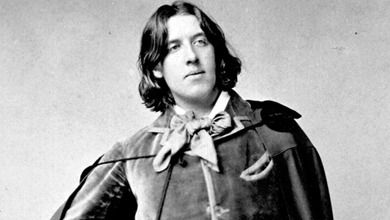
What is the value of art in society, and what are the artist’s moral imperatives? How must artists reconcile their predisposition toward sensory indulgences with modern mores, particularly if they gravitate towards a lifestyle that is largely stigmatized? Oscar Wilde's The Picture of Dorian Gray examined all of these questions. It was a seminal work of Gothic horror literature, and, although he was a highly accomplished playwright and critic, this was the only novel of Wilde’s that was ever published.
Wilde's book tells the story of an artist named Basil Hallward, who finds something of a muse in the young man Dorian Gray. It is during one of his visits to Basil's studio that Dorian meets the ultra-hedonistic Lord Henry Wotton, who quickly "befriends" Dorian and persuades him that sensory indulgences and worldly pleasures are what life is truly about. Basil finishes his portrait of Dorian, which is said to capture his beauty impeccably. Having been corrupted by Wotton, Dorian vainly wishes to retain the beauty of the painting forever, if only the painting were to age in his place.
Decades pass, and Dorian becomes increasingly cruel and conceited. He doesn't age a single day, but with each immoral act that he commits, the putrification of his soul manifests visually within the painting, which is kept out of view in Dorian’s attic.
Wilde claimed later in life that the book's three central characters were all fragmentations of his own persona. There was Basil, the noble artist, who was committed to his craft first and foremost -- this was how Wilde chose to view himself. Then there is the hedonistic Lord Henry Wotton, who was concerned chiefly with earthly pleasures -- this, Wilde believed, was how the rest of the world viewed him. And then there was Dorian, a beautiful creature who was fawned over, explicitly by women and implicitly by male suitors, who could get seemingly get away with anything and would never age -- this was what Wilde fantasized about being.
It's one of the most quotable novels from the Victorian era, employing the same rapier wit that is evident within Wilde places such as The Importance of Being Earnest and An Ideal Husband. Part of what distinguishes Dorian is its treatment of a rather taboo subject, and one which meant something especially unique to Wilde himself. It debuted in 1890, and was highly controversial for its latent homosexual themes. Bear in mind that this was published during a time when being gay wasn't merely stigmatized, but was technically a crime (and as a quick aside, you really should take a moment sometime to read the manuscripts of Wilde's trial -- he was evidently as quippy and quick-witted in person as you might hope), and a crime that Wilde himself would ultimately serve hard time for in European labor camps. Who knows how the man might have flourished creatively, if not for this setback.
Nevertheless, the book has inspired other works of art -- and some works are better than others. There was a film adaptation, entitled The Picture of Dorian Gray (1945), which was directed by Albert Lewin and featured performances by George Sanders and Angela Lansbury. It also features a particularly gruesome painting from Chicago artist Ivan Albright. More recently, there was the film Dorian Gray (2009), which was directed by Oliver Parker and starred Ben Barnes and Colin Firth. The Ivan Albright painting itself is part of the permanent collection at the Art Institute of Chicago, the Lewin film film can be watched online through services like DTV. You could order the DVD of the Oliver Parker film through Netflix, but don't waste your time.
Let us not judge Parker too harshly, though. As Wilde wrote in Dorian Gray, "The mere fact of having a published a book of second-rate sonnets makes a man quite irresistible. He's out living the poetry he cannot write."
